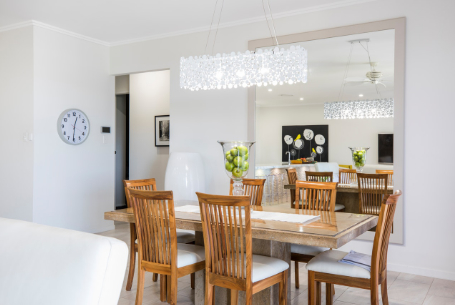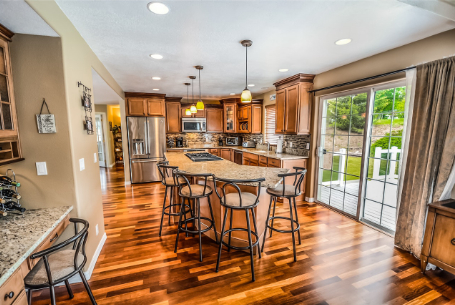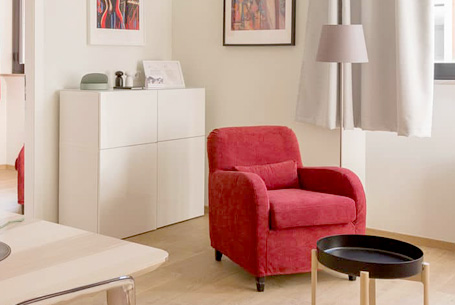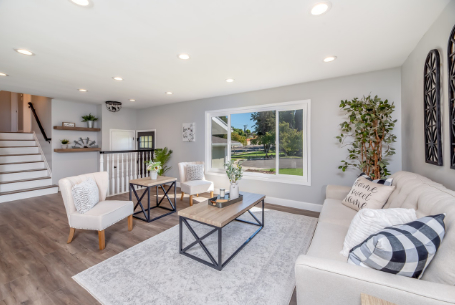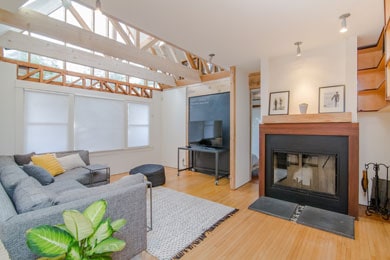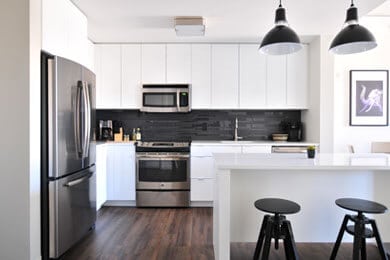.property24 bryanston
houses for sale in bryanston,Property, encompassing land, buildings, and other immovable assets, plays a fundamental role in our lives. It shapes our communities, influences financial decisions, and serves as a source of shelter and investment. This article delves into the multifaceted world of property, exploring its various types, investment opportunities, legalities involved, and market trends.
Need Help?
Message Us
Featured Listings
Who We Are
About Us
Property, encompassing land, buildings, and other immovable assets, plays a fundamental role in our lives. It shapes our communities, influences financial decisions, and serves as a source of shelter and investment. This article delves into the multifaceted world of property, exploring its various types, investment opportunities, legalities involved, and market trends.
The property landscape boasts a diverse range of categories, each catering to specific needs and preferences. Here’s a glimpse into some of the most common ones:
Find Your Perfect Home
For Rent
- Commercial
$ 5235/mo
123 Fifth Avenue, NY 10160
Offices: 20 / Baths: 6 / Sq Ft: 10450
For Rent
- Commercial
$ 1100/mo
123 Fifth Avenue, NY 10160
Bedrooms: 3 / Baths: 2 / Sq Ft: 1450
For Rent
- Residential
$ 1600/mo
123 Fifth Avenue, NY 10160
Bedrooms: 2 / Baths: 1 / Sq Ft: 450
For Sale
- Residential
$ 89,500
123 Fifth Avenue, NY 10160
Bedrooms: 1 / Baths: 1 / Sq Ft: 150
For Rent
- Commercial
$ 1300/mo
123 Fifth Avenue, NY 10160
Bedrooms: 2 / Baths: 2 / Sq Ft: 725
For Rent
- Residential
$ 1235/mo
123 Fifth Avenue, NY 10160
Bedrooms: 3 / Baths: 2 / Sq Ft: 1450
Property: houses for sale in bryanston
**Introduction**
Property is a multifaceted concept encompassing the rights and interests individuals or entities hold over valuable assets, as well as the assets themselves. It serves as a cornerstone of legal, economic, and social systems worldwide, shaping interactions and governance. This article explores the diverse dimensions of property, from its historical roots to its modern implications, examining its types, legal frameworks, philosophical debates, and socio-economic impacts.
**Historical Evolution of Property**
The concept of property has evolved significantly from ancient times to the modern era. Early societies often practiced communal ownership, where resources were shared among members of a community. As societies became more complex, the notion of private property emerged, driven by the need for individual ownership and control over resources.
In ancient civilizations such as Mesopotamia, Egypt, and Greece, property rights were codified in various ways, often linked to social status and power. For example, in ancient Rome, property laws were sophisticated, including concepts like ownership, transfer, and inheritance, which laid the groundwork for modern property law.
The medieval period saw the development of feudal systems, where land ownership was concentrated in the hands of a few, with peasants working the land under various forms of tenure. The transition to capitalist economies in the early modern period brought about significant changes, emphasizing private property rights as a means of economic development and wealth creation.
**Types of Property**
Property can be categorized into several types, each with distinct characteristics and legal implications. The primary categories include:
1. **Real Property**: This encompasses land and anything permanently attached to it, such as buildings and infrastructure. Real property rights include the ability to use, lease, or sell the land and its improvements. Real property transactions often involve detailed legal documentation and adherence to local regulations.
2. **Personal Property**: This includes movable items that are not affixed to land, such as vehicles, furniture, and personal belongings. Personal property is further divided into tangible assets (physical objects) and intangible assets (such as stocks and bonds).
3. **Intellectual Property**: This refers to creations of the mind, including patents, trademarks, copyrights, and trade secrets. Intellectual property rights protect the creator’s ability to control and profit from their innovations and artistic works.
4. **Public Property**: Owned by government entities or public institutions, public property is intended for communal use and access. Examples include parks, libraries, and government buildings.
5. **Collective Property**: Often associated with cooperatives and communal living arrangements, collective property is owned and managed by a group of individuals. The management and use of such property are determined collectively by the group members.
**Legal Frameworks and Definitions**
Property law varies widely across jurisdictions but generally includes principles related to ownership, transfer, and protection of property rights. Key elements of property law include:
1. **Ownership**: Ownership signifies the legal right to possess, use, and dispose of property. It can be absolute or limited, depending on the nature of the property and applicable laws.
2. **Transfer of Property**: Property can be transferred through various mechanisms, including sales, gifts, and inheritance. Legal documents such as deeds, wills, and contracts formalize these transactions.
3. **Property Rights**: Rights associated with property include the right to exclude others, the right to transfer ownership, and the right to use and enjoy the property. These rights may be subject to restrictions or obligations, such as zoning laws or easements.
4. **Leases and Licenses**: Leases provide temporary possession of property in exchange for rent, while licenses grant permission to use property without transferring ownership. Both arrangements involve legal agreements outlining the terms and conditions of use.
5. **Easements and Covenants**: Easements grant rights to use another’s property for a specific purpose, such as access or utilities. Covenants are agreements that impose restrictions or obligations on property use.
**Philosophical Theories of Property**
Philosophers have long debated the nature and justification of property rights. Key theories include:
1. **Lockean Theory**: John Locke argued that property rights stem from an individual’s labor. According to Locke, individuals have a natural right to own the fruits of their labor, which includes both tangible and intangible assets. This theory emphasizes the link between personal effort and ownership.
2. **Utilitarian Theory**: Utilitarianism, as proposed by thinkers like Jeremy Bentham, evaluates property rights based on their utility or contribution to overall happiness. Property rights are justified if they promote the greatest good for the greatest number of people.
3. **Marxist Theory**: Karl Marx critiqued private property, particularly in the context of capital. Marx argued that private ownership of the means of production leads to exploitation and inequality. He advocated for communal ownership as a means to achieve social justice and eliminate class distinctions.
4. **Communitarian Theory**: Communitarians emphasize the role of property in fostering community and social cohesion. They argue that property rights should be balanced with responsibilities toward the community and the common good.
**Economic Implications of Property**
Property rights play a crucial role in economic systems, influencing wealth distribution, resource allocation, and market dynamics. Key economic implications include:
1. **Capital Formation**: Property rights incentivize investment and capital formation by providing individuals and businesses with the assurance that they can benefit from their investments. This promotes economic growth and development.
2. **Resource Allocation**: Efficient property rights contribute to optimal resource allocation by allowing markets to function effectively. Property owners are motivated to use their resources productively to maximize returns.
3. **Wealth Inequality**: The distribution of property can impact wealth inequality. Concentration of property in the hands of a few can lead to disparities in wealth and opportunities, raising concerns about social equity.
4. **Market Transactions**: Property rights facilitate market transactions by defining ownership and transfer mechanisms. Clear property rights reduce transaction costs and promote economic activity.
**Sociological Perspectives on Property**
In sociology, property is often viewed as a social construct that reflects power dynamics, class structures, and cultural values. Key sociological perspectives include:
1. **Property as a Social Relationship**: Sociologists view property as a relationship between individuals and objects, shaped by social norms and legal frameworks. This perspective emphasizes the role of property in structuring social interactions and relationships.
2. **Class and Power**: Property ownership is closely linked to social class and power. Access to property can confer social status and influence, while disparities in property ownership can reinforce class divisions.
3. **Cultural Attitudes**: Different cultures have varying attitudes toward property, influenced by historical, religious, and social factors. These attitudes shape property laws and practices, reflecting broader cultural values.
**Contemporary Issues in Property**
Modern property issues encompass a range of legal, economic, and social challenges. Key contemporary issues include:
1. **Property Rights in the Digital Age**: The rise of digital technologies has introduced new forms of property, such as digital assets and intellectual property. Legal frameworks are evolving to address issues related to online content, data privacy, and digital ownership.
2. **Affordable Housing**: The affordability of housing is a significant issue in many urban areas. Rising property values and housing costs can lead to displacement and inequities, prompting discussions about housing policies and regulations.
3. **Environmental Sustainability**: Property development and land use can impact environmental sustainability. Balancing property rights with environmental protection is a key challenge, requiring policies that address land conservation and sustainable practices.
4. **Globalization and Property**: Globalization has increased cross-border property transactions and investments. International property laws and regulations are evolving to address issues related to foreign ownership, property rights, and investment.
**Conclusion**
Property is a complex and multifaceted concept with significant legal, economic, and social dimensions. Its evolution, types, and implications reflect changing societal values and priorities. Understanding property from various perspectives—historical, legal, philosophical, economic, and sociological—provides valuable insights into its role in shaping human interactions and societal structures. As societies continue to evolve, ongoing discussions and developments in property law and practice will shape the future of property rights and their impact on individuals and communities.
—
This expanded version provides a comprehensive overview of property, addressing its historical development, types, legal aspects, philosophical theories, economic and sociological perspectives, and contemporary issues.
We're Here To Help You

Apartments
Repossessed houses for sale in Bryanston
For many, particularly in bustling cities, apartments offer a convenient and vibrant living solution. This article delves into the world of apartments, exploring their types, advantages and disadvantages, considerations for choosing the perfect one, and tips for thriving in your apartment space.
A Spectrum of Apartment Options: Finding Your Fit
Apartments come in a variety of shapes and sizes to suit diverse lifestyles and budgets. Here’s a breakdown of some common types:
Studio Apartments: Compact and efficient, studios offer a single main living area, often incorporating a sleeping space, kitchenette, and bathroom. Ideal for young professionals or minimalists.
One-Bedroom Apartments: Providing a dedicated bedroom and separate living space, these apartments cater to individuals or couples seeking a bit more room.
Two-Bedroom Apartments: Perfect for couples, families, or roommates, these apartments offer two bedrooms and a living area for increased comfort and privacy.
Three-Bedroom or Larger Apartments: Accommodating families or groups, these spacious apartments provide multiple bedrooms, bathrooms, and living areas.
Loft Apartments: Characterized by open floor plans and high ceilings, lofts often boast a unique industrial aesthetic and cater to those seeking a trendy and airy living space.
Garden Apartments: Located on the ground floor, these apartments may feature a private patio or direct access to shared outdoor space, offering a connection to the outdoors.
Beyond size and layout, consider amenities offered by the apartment complex. Gyms, pools, laundry facilities, on-site parking, and security features can significantly enhance your living experience.
Weighing the Pros and Cons: Is Apartment Living Right for You?
Apartment living presents a unique set of advantages and disadvantages:
Advantages:
Affordability: Compared to single-family homes, apartments are generally more affordable, particularly in urban areas where housing costs are high.
Convenience: Many apartment complexes offer amenities like laundry facilities, maintenance services, and sometimes even on-site parking, simplifying daily living.
Location: Apartments are often situated in prime locations, offering easy access to public transportation, shops, restaurants, and entertainment options.
Security: Many apartment buildings have security features like controlled access and security cameras, fostering a sense of safety and peace of mind.
Disadvantages:
Limited Space: Compared to houses, apartments typically offer less square footage, demanding creative space management.
Privacy Concerns: Sharing walls and common areas with neighbors can lead to noise issues or a lack of privacy.
Restrictions: Apartment living often comes with limitations on renovations, pet ownership, or activities like playing loud music.
Dependence on Landlord: Repairs and maintenance requests rely on the responsiveness of the landlord or property management.
Carefully consider your priorities and lifestyle to determine if the advantages of apartment living outweigh the potential drawbacks.
Finding Your Perfect Match: Tips for Apartment Hunting
The search for the ideal apartment requires thorough research and consideration of these factors:
Location: Choose a neighborhood that aligns with your needs. Consider proximity to work, public transportation, amenities, and the overall vibe of the area.
Budget: Factor in rent, utilities, parking fees, and any move-in costs to ensure your chosen apartment aligns with your financial comfort zone.
Amenities: Prioritize the amenities most important to you, whether it’s a gym, laundry facilities, pet-friendliness, or on-site security.
Read the Lease Carefully: Understand your rights and responsibilities as a tenant, including maintenance procedures, rent payment terms, and subletting policies.
Schedule Viewings: Don’t make a decision sight unseen. Tour potential apartments to assess the space, natural light, noise levels, and overall condition.
By following these tips, you’ll be well-equipped to find an apartment that feels like home.
Thriving in Your Apartment Oasis: Tips for Maximizing Space and Comfort
Living comfortably in an apartment often requires creative space management and fostering a sense of community. Here are some helpful pointers:
Embrace Multifunctional Furniture: Invest in furniture that serves multiple purposes, such as a sleeper sofa or a dining table that folds into a desk.
Utilize Vertical Space: Install shelves and cabinets that reach high walls to maximize storage capacity.
Declutter Regularly: Regularly declutter your belongings to avoid feeling overwhelmed in a smaller space.
Personalize Your Space: Add decorative touches like artwork, throw pillows, and plants to create a warm and inviting atmosphere.
Connect with Neighbors: Introduce yourself to your neighbors and participate in community events to build a sense of belonging.
Apartment living offers a vibrant and convenient lifestyle option for many. By understanding the different types, carefully considering your needs,

Houses
Luxury houses for sale in Bryanston
There’s a reason why Dorothy clicked her heels together and wished for “no place like home.” Houses transcend mere structures; they are sanctuaries, havens built with bricks and mortar, but overflowing with memories and emotions. This article delves into the captivating world of houses, exploring their architectural styles, the history behind them, and the emotional connection we forge with them.
A Journey Through Architectural Styles: From Humble Abode to Grand Manor
The architectural style of a house speaks volumes about its history, cultural influences, and the lives lived within its walls. Here’s a glimpse into some captivating styles:
The Timeless Charm of Bungalows: Characterized by their single-story layout, wide porches, and gently sloping roofs, bungalows evoke a sense of comfort and nostalgia.
Victorian Grandeur: These ornate houses boast intricate details, stained glass windows, and asymmetrical designs, reflecting a bygone era of opulence.
Modern Minimalism: Clean lines, open floor plans, and an emphasis on natural light define modern houses, creating a sleek and functional living environment.
Rustic Retreats: Cabins and lodges, often built with natural materials like wood and stone, offer a connection to nature and a sense of cozy seclusion.
The Allure of Mid-Century Modern: Emerging after World War II, these houses showcase open floor plans, large windows, and a connection to the outdoors, reflecting a desire for a simpler, brighter future.
This is just a taste of the vast array of architectural styles that define houses across the globe. Each style tells a story, reflecting cultural influences, technological advancements, and the ever-evolving needs of society.
A Legacy in Brick and Mortar: The History Woven Within Walls
Houses are time capsules, holding within their walls stories of the families who called them home. From the grand estates passed down through generations to the modest cottages that witnessed the changing tides of neighborhoods, houses bear silent witness to history.
Architectural details can offer clues to a house’s past. Victorian mourning drapes bricked into a window might hint at a bygone tragedy, while worn engravings on a doorstep could whisper tales of forgotten residents.
Houses can also serve as testaments to social change. The rise of suburbs in the 20th century reflected a shift towards nuclear families and a yearning for green space. Today’s focus on sustainable living is reflected in the growing popularity of eco-friendly houses.
Building a Sanctuary: The Emotional Connection to Our Houses
Beyond their architectural beauty and historical significance, houses hold a profound emotional connection for us. They are the backdrops to our lives, where we celebrate milestones, weather storms, and create lasting memories.
The first house we remember, perhaps a childhood home, shapes our sense of security and belonging. The creak of the floorboards, the scent of freshly baked cookies, the warmth of a crackling fireplace – these sensory details weave themselves into the fabric of our being.
As we navigate life stages, our houses evolve with us. A young couple might find joy in a cozy starter home, while a growing family seeks a house with space for laughter and memories. In retirement, a house might become a haven for quiet reflection.
Ultimately, a house is more than bricks and mortar. It’s a reflection of ourselves, a canvas upon which we paint the stories of our lives. It’s a safe harbor, a place where we can truly be ourselves and find solace.
Conclusion: Houses – Sheltering Our Dreams
From the architectural marvels that grace our cities to the humble abodes that line our streets, houses are an integral part of the human experience. They are not merely shelters; they are testaments to history, reflections of our ever-changing needs, and the stage upon which we create our most cherished memories. Whether we find comfort in a traditional Victorian or embrace the clean lines of a modern masterpiece, the house we call home is a symbol of our dreams, aspirations, and the enduring human desire to belong.

Offices
Flats to rent in Bryanston for r3000
The office, once a symbol of traditional work culture, is undergoing a significant transformation. Fueled by technological advancements, remote work possibilities, and a growing emphasis on employee well-being, the way we design, utilize, and perceive office spaces is changing dramatically. This article dives into the evolving landscape of offices, exploring trends, design considerations, and the impact on the future of work.
Estates in Bryanston
The rigid cubicles of the past are giving way to flexible and adaptable workspaces. Open floor plans, once hailed as the epitome of collaboration, are now being reevaluated due to concerns about noise distraction and lack of privacy. The modern office embraces a variety of work settings, catering to different work styles and tasks. Think: dedicated focus areas for deep work, collaborative zones for brainstorming sessions, and comfortable lounges for informal interactions.
Bryanston property for sale in boomed off Road
Technology plays a pivotal role in shaping the modern office. Cloud-based solutions enable seamless remote work and collaboration, while video conferencing software bridges geographical distances. Smart building technologies optimize lighting, temperature, and air quality, creating a comfortable and productive environment. Additionally, the rise of hoteling, where employees reserve desks as needed, promotes efficient space utilization.
The Human Touch: Prioritizing Well-being
Employee well-being has become a top priority for many organizations. This translates into office designs that prioritize natural light, ergonomic furniture, and access to wellness amenities. Biophilic design, incorporating elements of nature, has been shown to improve mood, creativity, and focus in the workplace. Additionally, break areas with comfortable seating, healthy food options, and recreation facilities foster relaxation and rejuvenation.
The Rise of Activity-Based Working (ABW)
Activity-based working (ABW) is a concept gaining traction. It moves away from assigned desks and encourages employees to choose the work environment that best suits their current task. This could involve a quiet corner for focused work, a collaboration area for brainstorming sessions, or a comfortable lounge for casual meetings. ABW empowers employees to take ownership of their work style and fosters a more dynamic work environment.
The Future of Offices: Collaboration and Community
The future of offices is likely to be a hybrid model, with a blend of remote work and in-person interaction. Offices will evolve into collaboration hubs, where employees come together for brainstorming sessions, team building activities, and fostering a sense of community. They will be designed to be inspiring, innovative, and support social connections, elements that are difficult to replicate remotely.
Conclusion: Embracing the Transformation
The transformation of the office is not just about physical space; it’s a reflection of a changing work culture. By embracing flexibility, prioritizing well-being, and leveraging technology, organizations can create offices that empower employees, foster collaboration, and drive innovation in the future of work.
Trusted By






- +1 910-626-85255
The Intricate World of Property: A Comprehensive Guide
Property, encompassing land, buildings, and other immovable assets, plays a fundamental role in our lives. It shapes our communities, influences financial decisions, and serves as a source of shelter and investment. This article delves into the multifaceted world of property, exploring its various types, investment opportunities, legalities involved, and market trends.
Unveiling Property Types: A Rich Tapestry
The property landscape boasts a diverse range of categories, each catering to specific needs and preferences. Here’s a glimpse into some of the most common ones:
Residential Property: This category forms the backbone of the property market, encompassing single-family homes, apartments, condominiums, townhouses, and retirement communities.
Commercial Property: Designed for business purposes, this type includes office buildings, retail spaces, warehouses, hotels, and motels.
Industrial Property: Comprising factories, manufacturing plants, distribution centers, and power plants, this sector caters to the needs of industrial operations.
Land: Vacant land can be purchased for future development, agricultural purposes, or simply as an investment.
Special Purpose Property: This category encompasses unique properties like schools, hospitals, religious buildings, and government facilities.
Demystifying Property Investment: Strategies for Success
Property investment offers the potential for significant returns but requires careful planning and consideration. Here are some key strategies to consider:
Define Your Goals: Are you seeking capital appreciation, rental income, or a combination of both? Aligning your goals with the right property type is crucial.
Location, Location, Location: The adage holds true. Research the area’s demographics, amenities, infrastructure, and future development plans.
Conduct Thorough Due Diligence: Investigate the property’s condition, legal status, zoning restrictions, and potential hidden costs.
Crunch the Numbers: Factor in purchase price, ongoing maintenance, property taxes, insurance, and potential vacancy rates when calculating your return on investment (ROI).
Seek Professional Guidance: Consider consulting a real estate agent, property manager, or financial advisor for expert insights.
Navigating the Legal Landscape: Essential Considerations
Understanding the legalities involved in property transactions is paramount. Some key aspects to consider include:
Property Ownership: Familiarize yourself with different ownership structures like sole ownership, joint tenancy, and tenancy in common.
Contracts and Agreements: Ensure all agreements, including purchase agreements, leases, and maintenance contracts, are clear and legally binding.
Zoning Regulations: Verify the property’s zoning to ensure your intended use is compliant.
Taxes and Permits: Research property taxes, capital gains taxes, and any necessary permits required for renovation or development.
Title Insurance: Consider title insurance to protect yourself against potential claims on the property’s ownership.
Decoding Market Trends: Staying Ahead of the Curve
The property market is dynamic and influenced by various factors. Here are some trends that may impact the market in the coming years:
Rise of Smart Homes: Properties equipped with smart technology for automation and energy efficiency are becoming increasingly popular.
Urbanization and Densification: Growth in urban centers may lead to a rise in demand for apartments, condominiums, and mixed-use developments.
Focus on Sustainability: Energy-efficient and eco-friendly properties are gaining traction as environmental concerns rise.
Technological Advancements: Virtual tours, online property listings, and proptech (property technology) solutions are transforming the way properties are bought and sold.
Demographic Shifts: The aging population may drive demand for accessible housing options and senior living communities.
Staying informed about these trends can empower you to make informed decisions in the ever-evolving property market.
Conclusion: Property – A Cornerstone of Our Lives
Property is undeniably a cornerstone of our lives, shaping our social, economic, and personal well-being. Understanding the different property types, investment strategies, legalities involved, and market trends equips you with the knowledge to navigate this complex but rewarding domain. Whether you seek to purchase your dream home, embark on a lucrative investment journey, or simply stay informed, this comprehensive guide serves as a valuable resource in your property exploration.
Note: This article provides a general overview of property. It is recommended to conduct further research specific to your local market and investment goals.
houses for sale in bedfordview
centurion accommodation to rent
apartment to rent in centurion
houses for sale in eersterivier
houses for sale in witpoortjie
apartments to rent in parklands

